Overview
This article provides essential tips for achieving success in column flash chromatography, underscoring the critical importance of various factors.
- Selecting the right stationary phase is paramount, as it directly influences separation efficiency.
- Additionally, optimizing flow rates, ensuring thorough sample preparation, and closely monitoring elution are vital steps that cannot be overlooked.
- Choosing the appropriate solvents and maintaining equipment are equally crucial for reliable results.
- Furthermore, utilizing software tools enhances analytical capabilities, while training staff ensures that they are equipped with the necessary skills.
- Collaborating with experts in the field can further elevate the quality of chromatographic analyses.
Collectively, these strategies enhance the efficiency and reliability of your chromatographic efforts, paving the way for successful outcomes.
Introduction
In the realm of analytical chemistry, column flash chromatography is a pivotal technique, essential for the separation and purification of compounds across various research fields. As laboratories strive for efficiency and accuracy, understanding the nuances of this method becomes paramount. This article explores ten essential tips designed to elevate chromatography practices, covering aspects from selecting the appropriate stationary phase to optimizing flow rates and maintaining equipment. However, with numerous variables at play, how can one ensure consistent success in achieving optimal separation and purity?
JM Science: Advanced Solutions for Flash Column Chromatography
JM Science Inc. stands at the forefront of high-performance liquid techniques, offering a comprehensive array of sophisticated solutions for column flash chromatography. Their product portfolio features premium HPLC columns, specialized titrators such as the AQ-300 Coulometric and AQV-300 Volumetric Karl Fischer Titrators, alongside analytical balances. These instruments are essential for laboratories seeking effective separation and analysis.
The significance of HPLC in laboratory settings is underscored by its widespread application, especially in column flash chromatography, with the flash separation market projected to reach USD 536.17 million by 2032. This growth is fueled by the increasing demand for efficient purification methods, including column flash chromatography, in drug discovery and biotechnology.
Through strategic partnerships with industry leaders like Agilent Technologies and Thermo Fisher Scientific, JM Science ensures that clients benefit from top-tier solutions tailored to their specific analytical needs. Recent innovations in column flash chromatography, such as automated systems and advanced stationary phases, are revolutionizing the field by enhancing both efficiency and resolution in laboratory processes.
As the market continues to evolve, JM Science remains dedicated to delivering state-of-the-art products that empower laboratories to achieve their analytical objectives.
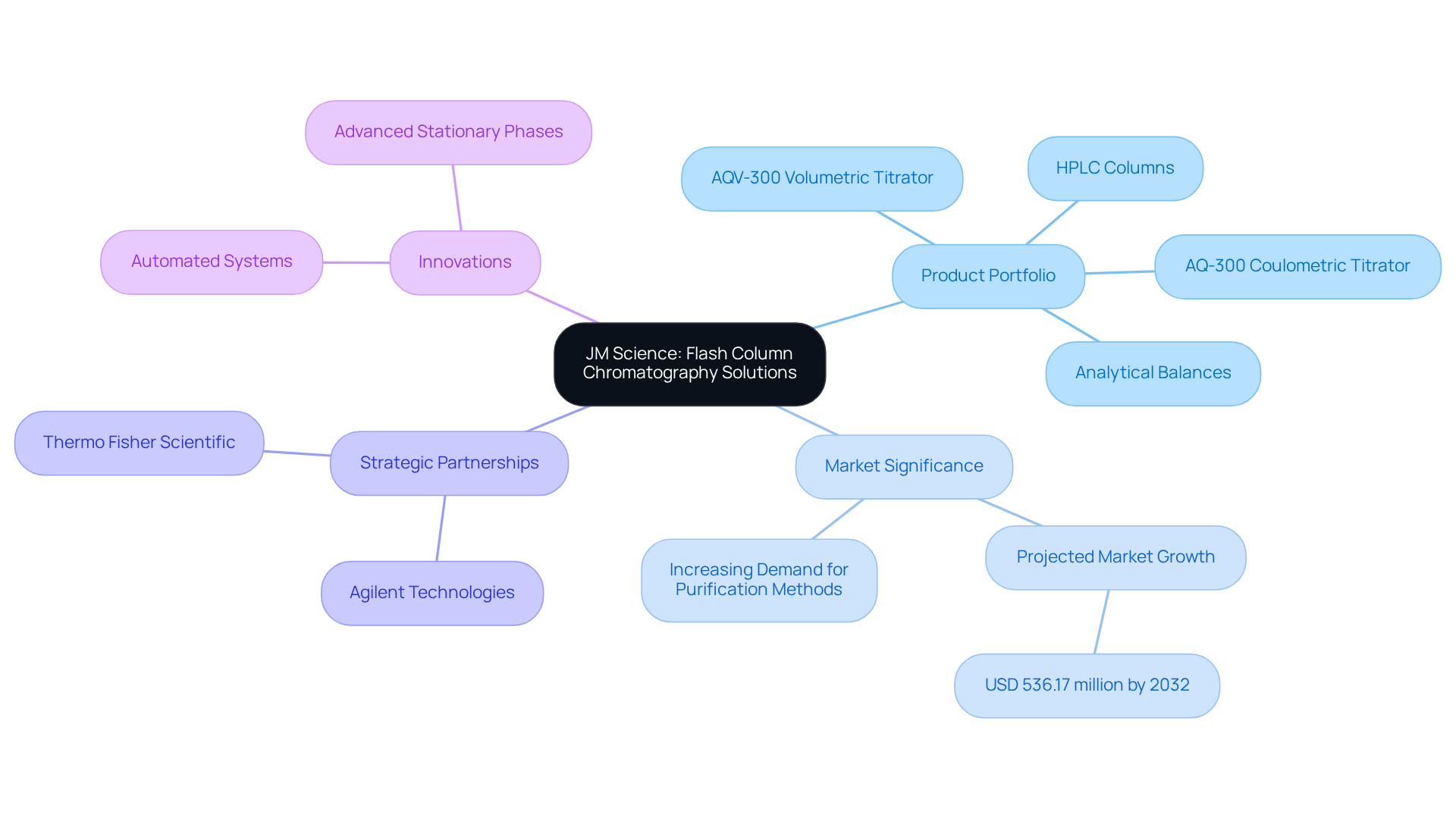
Choose the Right Stationary Phase for Effective Separation
Selecting the appropriate stationary phase is critical for achieving effective resolution in column flash chromatography. Key considerations encompass the polarity of the compounds being separated, as well as the characteristics of the available stationary phases, including silica gel and alumina.
- For polar compounds, employing a polar stationary phase enhances interaction and efficiency.
- Non-polar compounds benefit from a non-polar stationary phase.
- A comprehensive understanding of the chemical properties of the analytes is essential, as it informs the selection process and ultimately ensures optimal distinction and resolution.
- Moreover, the choice of organic modifier in the mobile phase significantly influences retention mechanisms and overall separation efficiency.
- For instance, silica gel is often preferred for its versatility and effectiveness in separating a broad spectrum of compounds, whereas alumina proves particularly advantageous for specific applications that require distinct adsorption characteristics.
- Additionally, evaluating the impact of buffer pH on retention times is crucial, as it can affect the elution behavior of analytes.
By meticulously assessing these factors, laboratory managers can markedly enhance the outcomes of their chromatographic analyses.
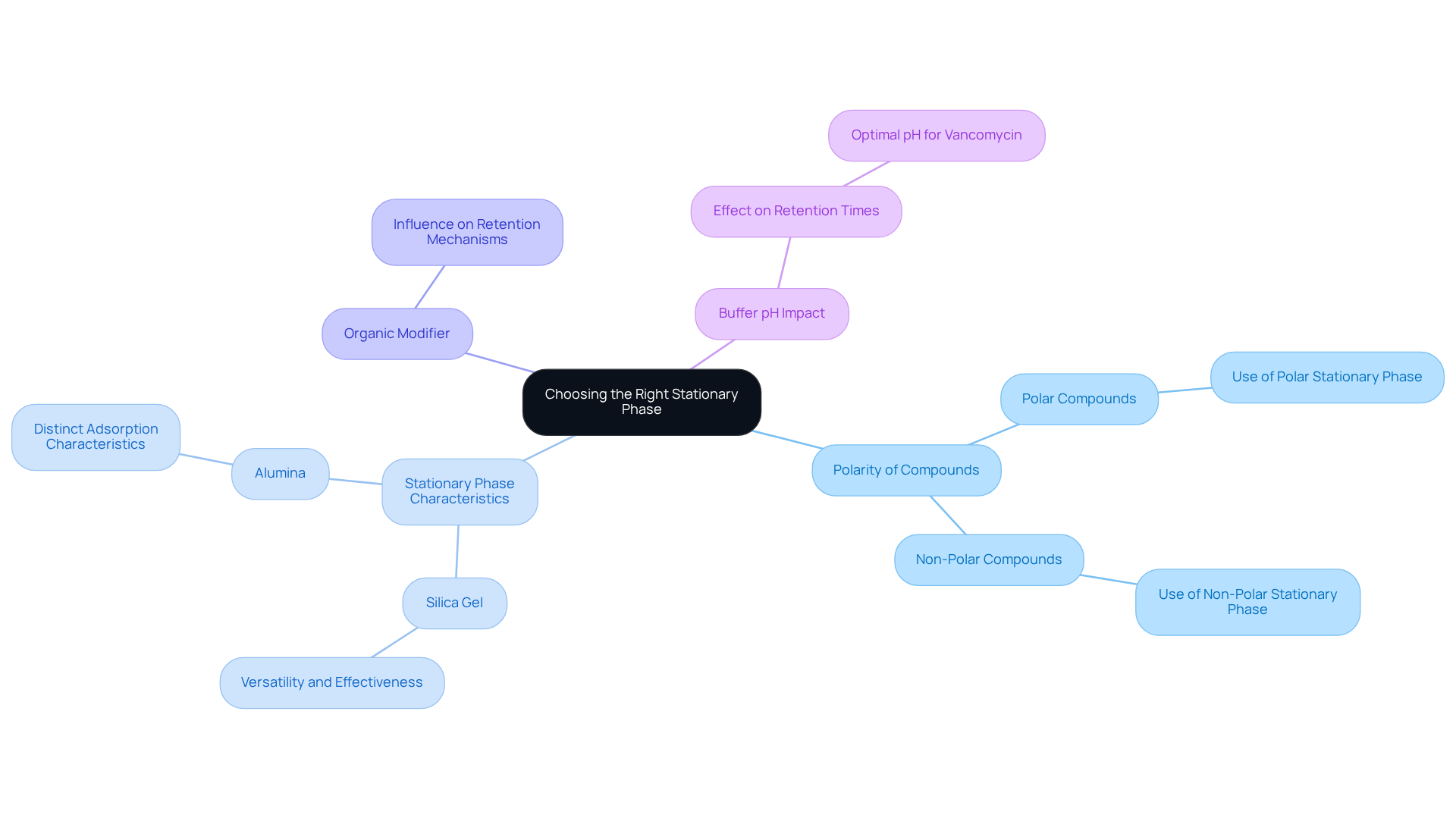
Optimize Flow Rates to Enhance Chromatography Performance
Optimizing flow rates is crucial for maximizing chromatography performance, particularly in flash chromatography. The optimal flow rate for nominal 12-gram C18 columns typically ranges from 12 mL/min to 30 mL/min, striking a balance between efficiency in separation and processing time. Research demonstrates that increasing flow rates can decrease separation efficiency, with a notable 3% reduction in resolution observed between 12 and 20 mL/min, and an 11% decline between 12 and 30 mL/min. This underscores the necessity of careful flow rate adjustments to preserve compound purity during purification processes.
Real-world applications showcase the effectiveness of these adjustments. For example, a study on column flash chromatography for peptide purification indicated that while higher flow rates facilitate larger loads per injection and enhance time and solvent efficiency, exceeding 30 mL/min results in broader peaks and diminished resolution. This highlights the imperative for chemists to customize flow rates according to their specific needs.
Regular monitoring and adjustments based on particular flow rates and the conditions of the chromatography setup can lead to enhanced resolution and decreased solvent consumption. By comprehending the impact of flow rates on partitioning performance, laboratories can refine their purification processes and achieve superior results in their analytical endeavors. As John McDonald remarked, 'We used to experience some incredible distinctions.' Notably, very close separations could be visualized by spotting a wide TLC plate that alternated between early and later tubes. This insight emphasizes the practical implications of optimizing flow rates in separation techniques.
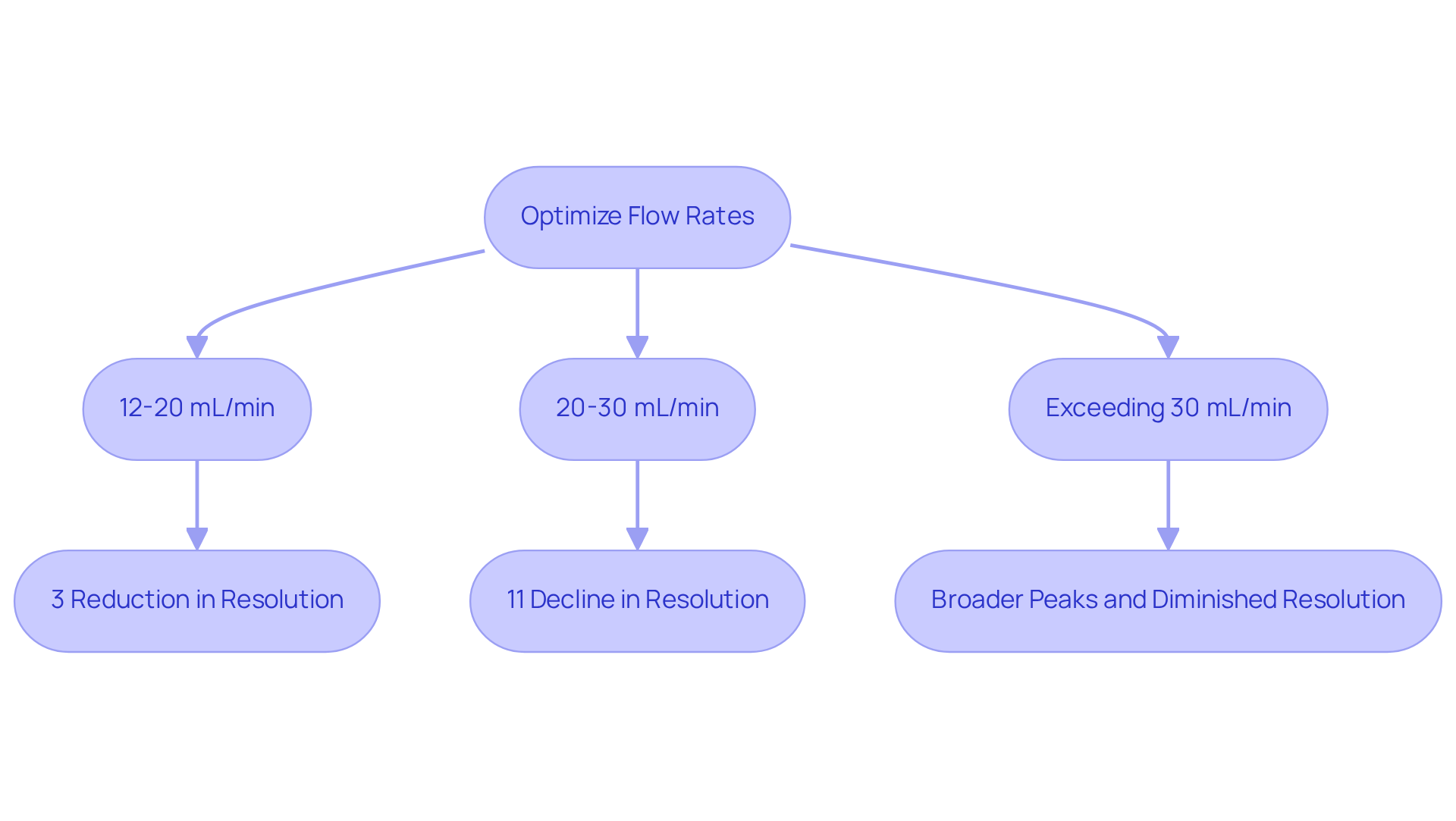
Prepare Samples Thoroughly for Reliable Results
Meticulous sample preparation is crucial for achieving dependable outcomes in column flash chromatography. Properly dissolving samples in an appropriate solvent and ensuring they are free from impurities are foundational steps in this process. Techniques such as filtration and centrifugation effectively eliminate particulates that could obstruct separation. Moreover, employing the least polar solvent feasible for dissolving the sample significantly enhances the efficiency of the elution process. This strategic approach not only optimizes results but also underscores the importance of precision in laboratory practices.
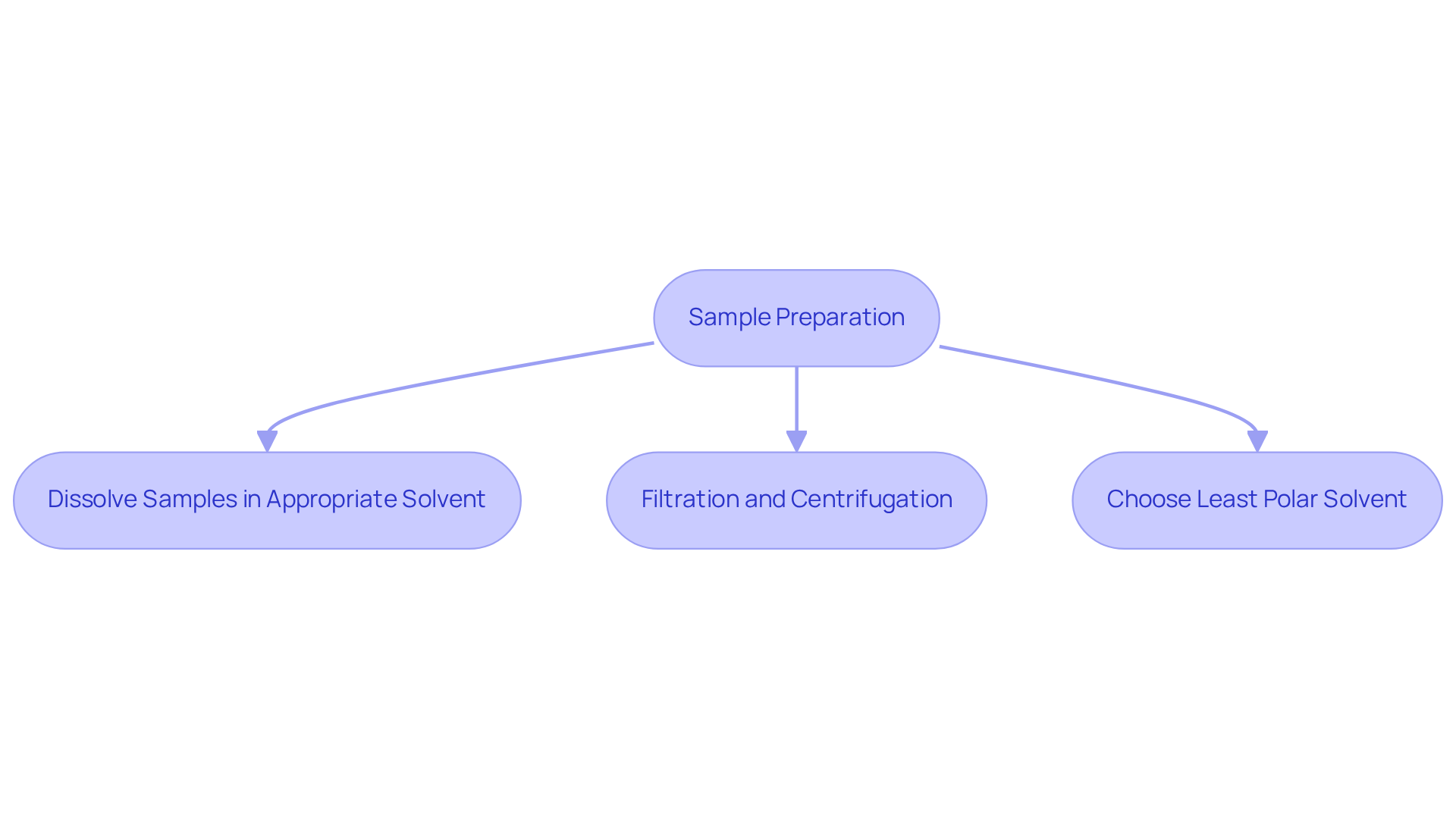
Monitor Elution to Identify Optimal Fractions
Effective monitoring of elution is crucial for identifying optimal fractions during column flash chromatography separation. Methods such as thin-layer analysis (TLC) and UV-Vis detection are vital for overseeing the separation process. TLC, recognized for its rapid execution and sensitivity, enables chemists to visualize the separation of compounds and assess their purity in real-time. The optimized HPTLC method, exemplified in the case study 'High-Performance Thin-Layer Chromatography (HPTLC) for Phenolic Profiling,' has proven effective in analyzing phenolic profiles in extracts, demonstrating its capability in monitoring elution progress.
Furthermore, UV-Vis detection offers quantitative insights into the concentration of target compounds as they elute, allowing for precise timing in fraction collection. By examining the elution profile, chemists can pinpoint the optimal moments to collect fractions containing desired compounds, thereby maximizing yield and purity. Regular evaluations of the elution process enhance decision-making regarding fraction collection and contribute to improved consistency and quality in the final product.
Recent advancements in data analytics, particularly the application of multivariate statistical analysis (MVDA), bolster the monitoring of elution processes. These techniques aid in recognizing essential quality characteristics and enhancing the understanding of elution dynamics, ensuring that the separation process remains efficient and effective. As the field progresses, integrating these techniques will be essential for achieving success in vertical separation.
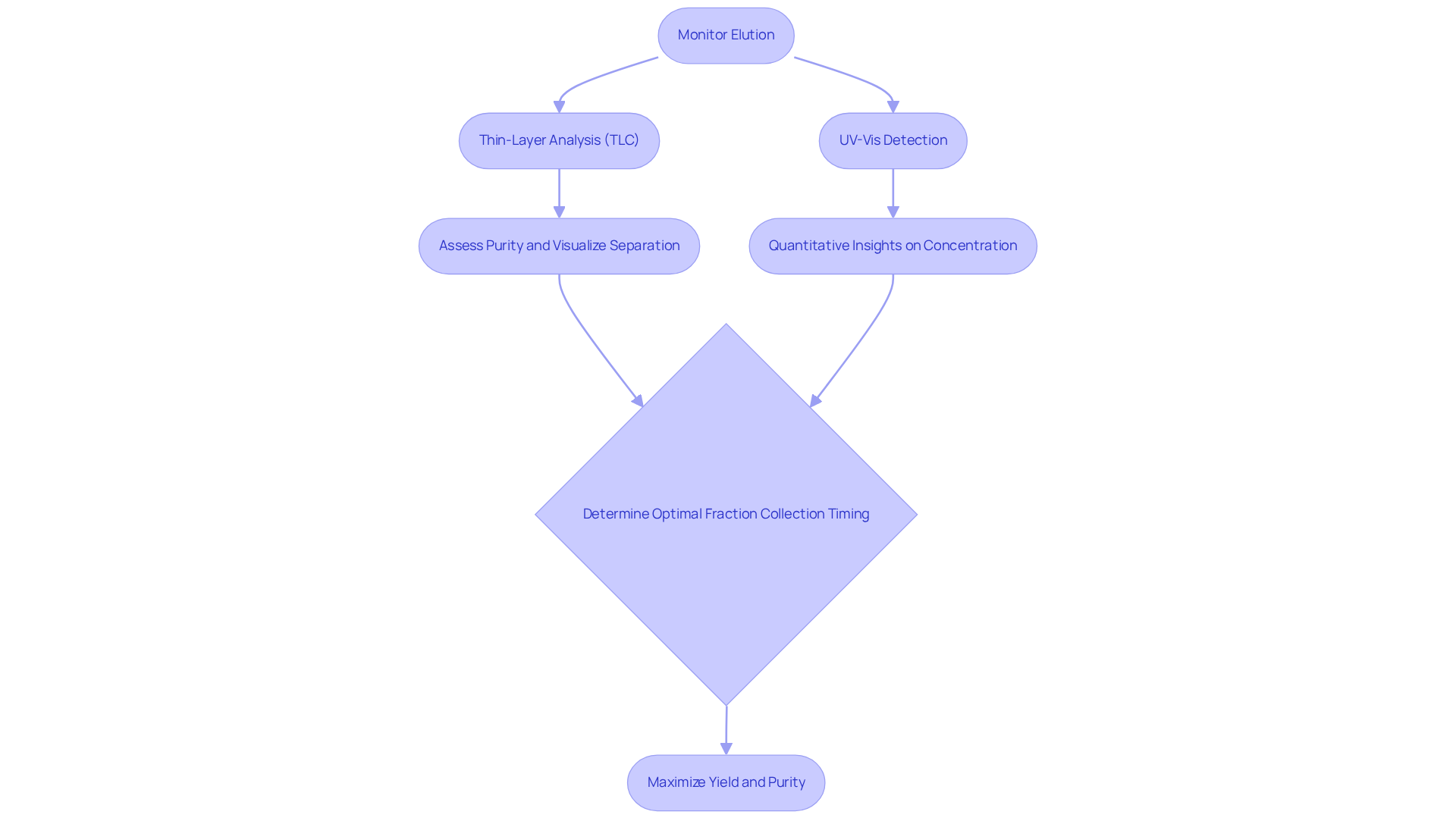
Select Appropriate Solvents for Enhanced Separation
Selecting the appropriate solvent system is crucial for achieving optimal resolution in column flash chromatography. This selection must be guided by the polarity of the compounds involved. For instance, the combination of non-polar solvents like hexane with polar solvents such as ethyl acetate can yield efficient separations of various compounds. Furthermore, understanding the solubility of target compounds in the chosen solvents is essential for ensuring effective elution and isolation.
Recent studies have demonstrated that solvent strength significantly influences outcomes; a notable example is a 70:30 blend of hexane and ethyl acetate, which has a calculated strength of 0.136 and can enhance the resolution of closely spaced compounds. Additionally, utilizing constant binary mixtures is advisable for compounds with similar Rf values, while gradient systems prove more effective for those with divergent Rf values. As Bob Bickler aptly notes, performing an 'apples-to-apples' comparison at the same solvent strength can be instrumental in determining the optimal blend for sample purification.
This strategic approach to solvent selection in column flash chromatography not only enhances separation efficiency but also reduces the risk of co-elution, ultimately resulting in more reliable analytical results. By carefully considering these factors, researchers can significantly enhance their chromatographic outcomes.
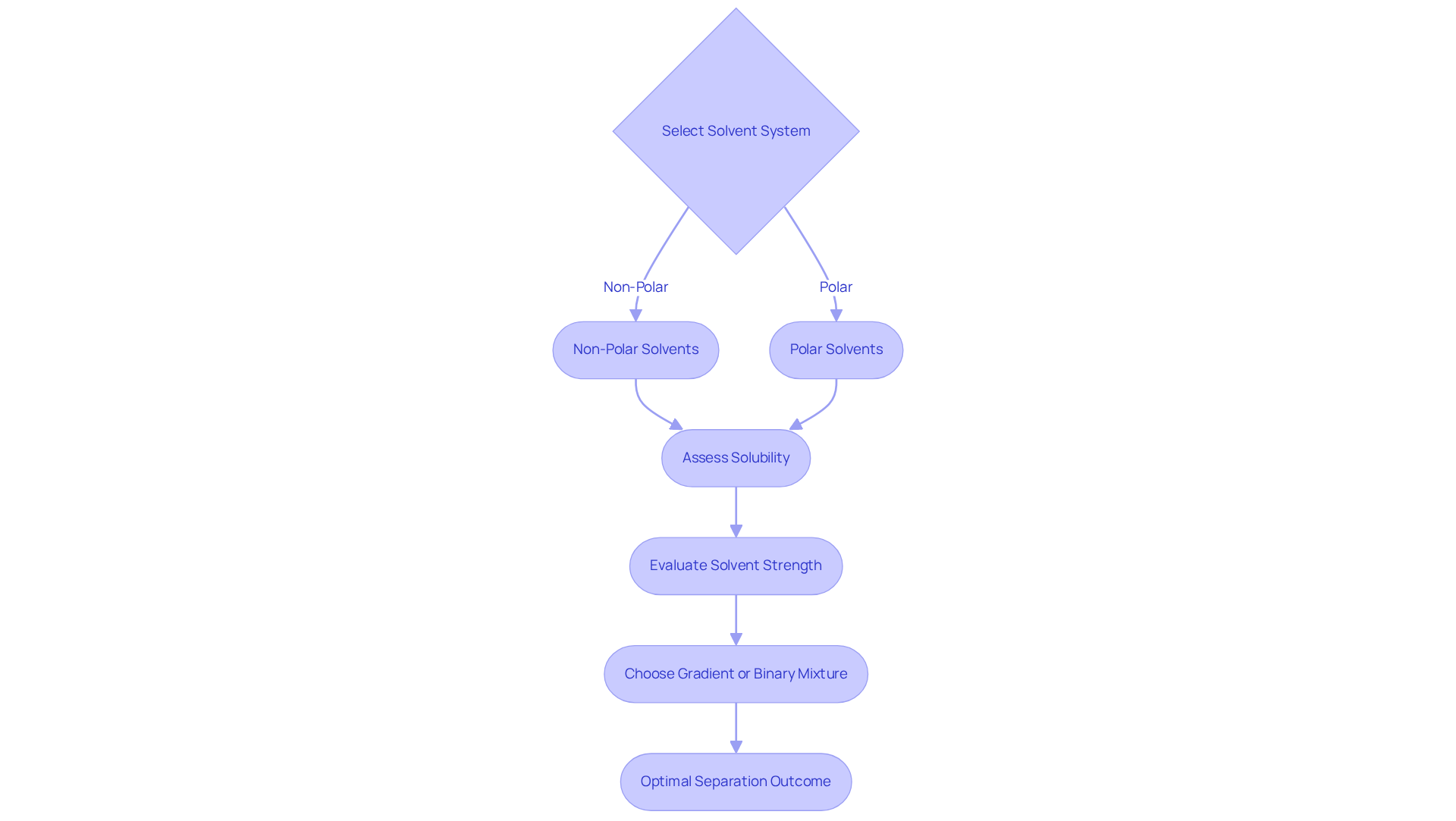
Maintain Equipment for Consistent Chromatography Results
Maintaining chromatography equipment is crucial for achieving reliable and consistent results in analytical processes. Routine evaluations must encompass the strength of supports, the operation of pumps, and thorough cleaning of the system to prevent contamination. Essential internal cleaning is vital to mitigate issues such as baseline noise and drift. Implementing a proactive maintenance schedule facilitates the early identification of potential problems, ensuring that equipment functions at peak efficiency.
For example, routine flushing of systems with HPLC-grade water can significantly diminish the risk of clogs—one of the most prevalent reasons for professional maintenance calls—and extend the lifespan of components. Furthermore, appropriate storage of vertical structures and other critical components enhances their durability and reliability, ultimately contributing to the precision of analytical outcomes.
As noted by Government Scientific Source, 'Impurities in solvents can reduce lifespan and deteriorate system components,' underscoring the importance of utilizing high-purity solvents. By prioritizing these maintenance practices and scheduling professional servicing every 12 months, laboratories can protect their investments and ensure the integrity of their research outcomes. Establishing a maintenance calendar can also streamline these efforts.
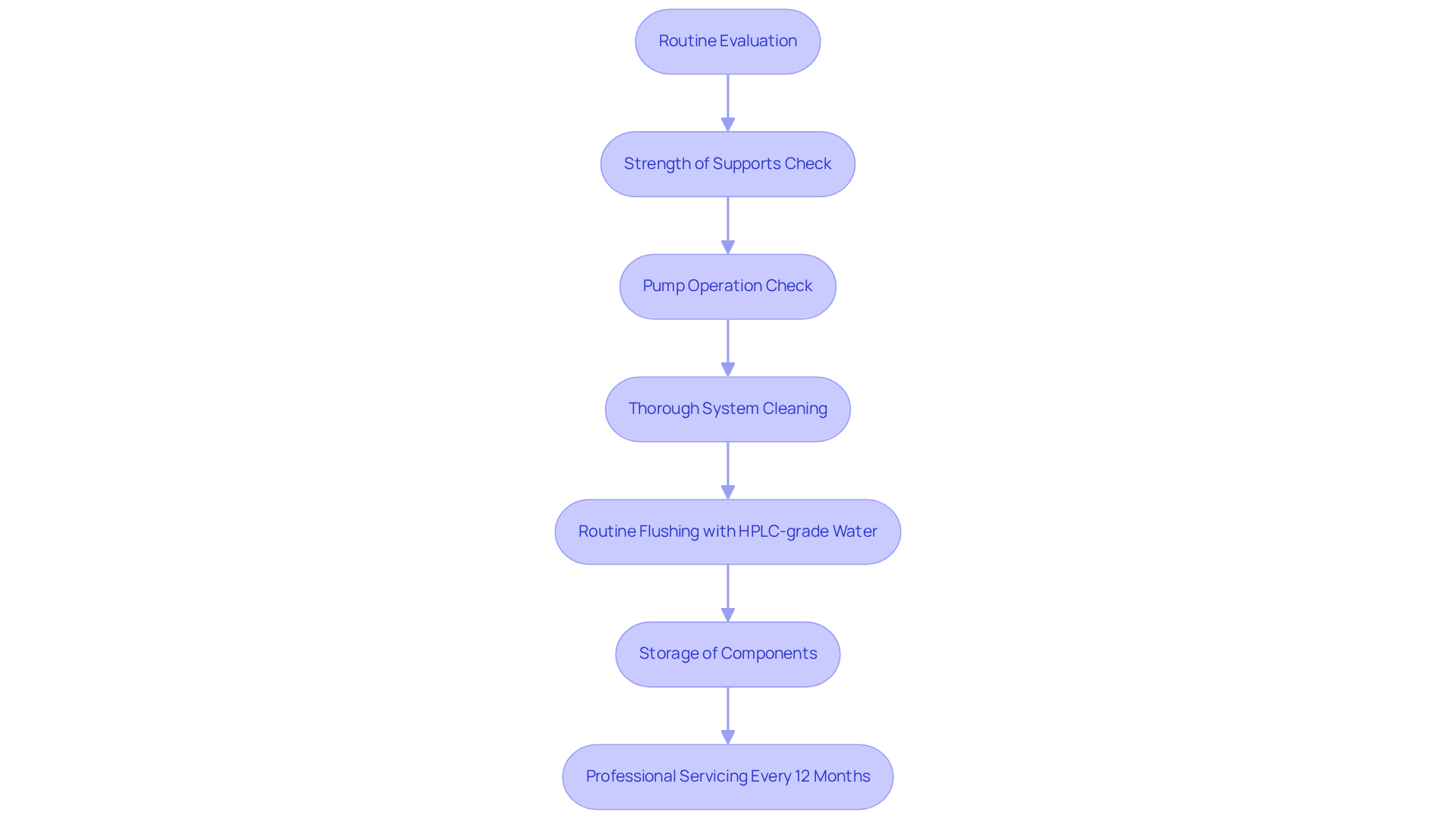
Utilize Software Tools for Efficient Data Analysis
Utilizing advanced software tools for data analysis significantly enhances the effectiveness of column flash chromatography. Modern chromatography data systems (CDS) facilitate real-time monitoring, data acquisition, and chromatogram analysis, automating numerous data processing tasks. This automation not only reduces human errors but also improves the reproducibility of results—an essential factor in testing environments.
To fully leverage the capabilities of these advanced tools, it is crucial for staff to receive appropriate training, ensuring they can accurately interpret data and effectively enhance their workflows. Furthermore, the incorporation of AI and machine learning within these systems optimizes processes, rendering them indispensable for modern analytical facilities.
Notably, the worldwide separation data systems market is projected to expand from USD 3.5 billion in 2024 to USD 5.8 billion by 2034, underscoring the increasing reliance on these technologies. Companies such as Thermo Fisher Scientific are also enhancing their products with AI-driven analytics modules, which provide predictive maintenance and sophisticated data insights, highlighting the transformative impact of software tools in research settings.
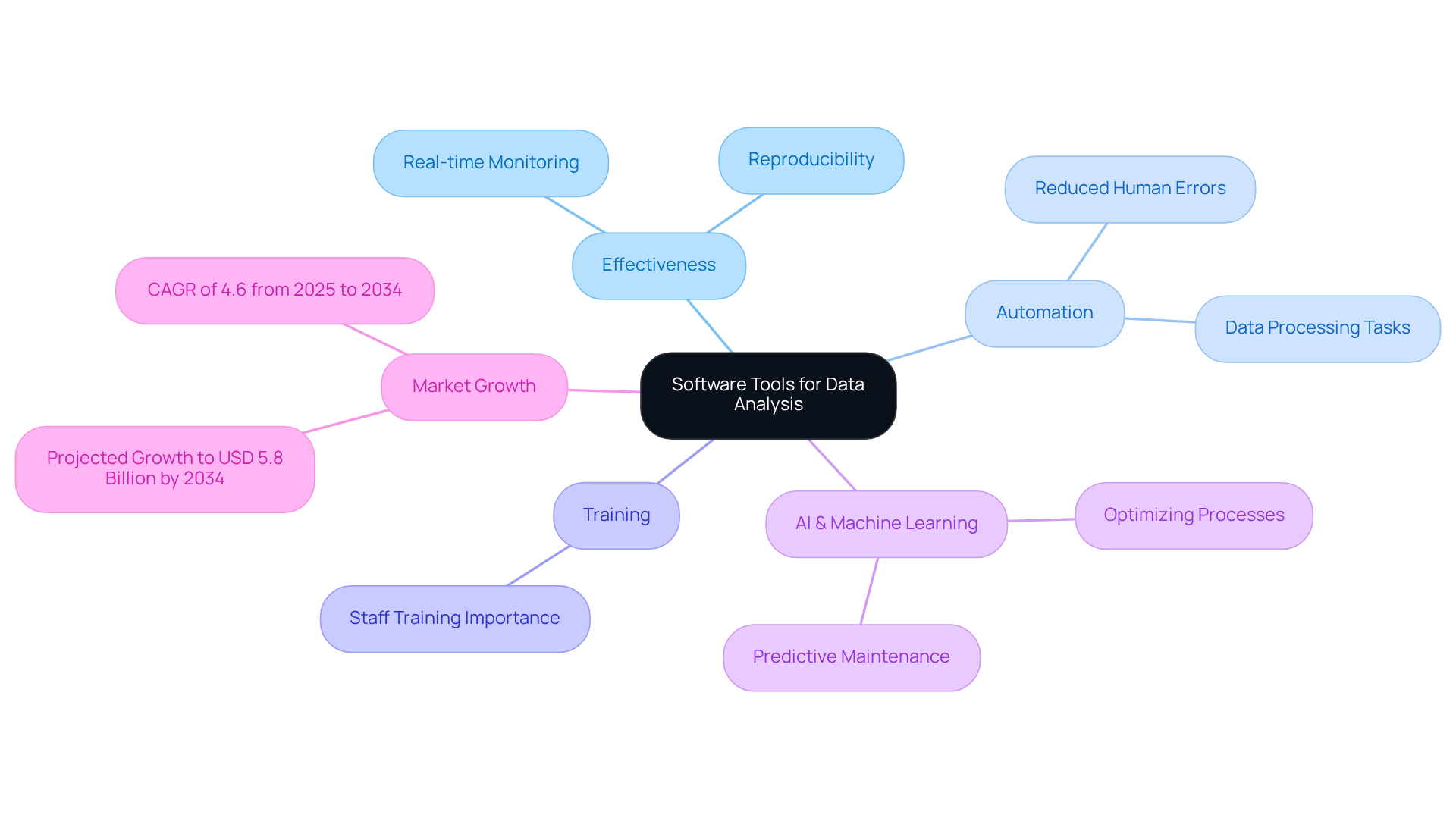
Invest in Training for Laboratory Staff on Best Practices
Investing in training for technical personnel in best practices for separation techniques is crucial for achieving high-quality outcomes. Training programs must encompass vital topics such as:
- Proper sample preparation
- Equipment maintenance
- Data analysis techniques
To keep staff updated on the latest advancements in the field, regular workshops and refresher courses are essential. This ensures that personnel are equipped to handle complex procedures while maintaining compliance with regulatory standards. Such training not only enhances individual capabilities but also reinforces the overall integrity of laboratory operations.
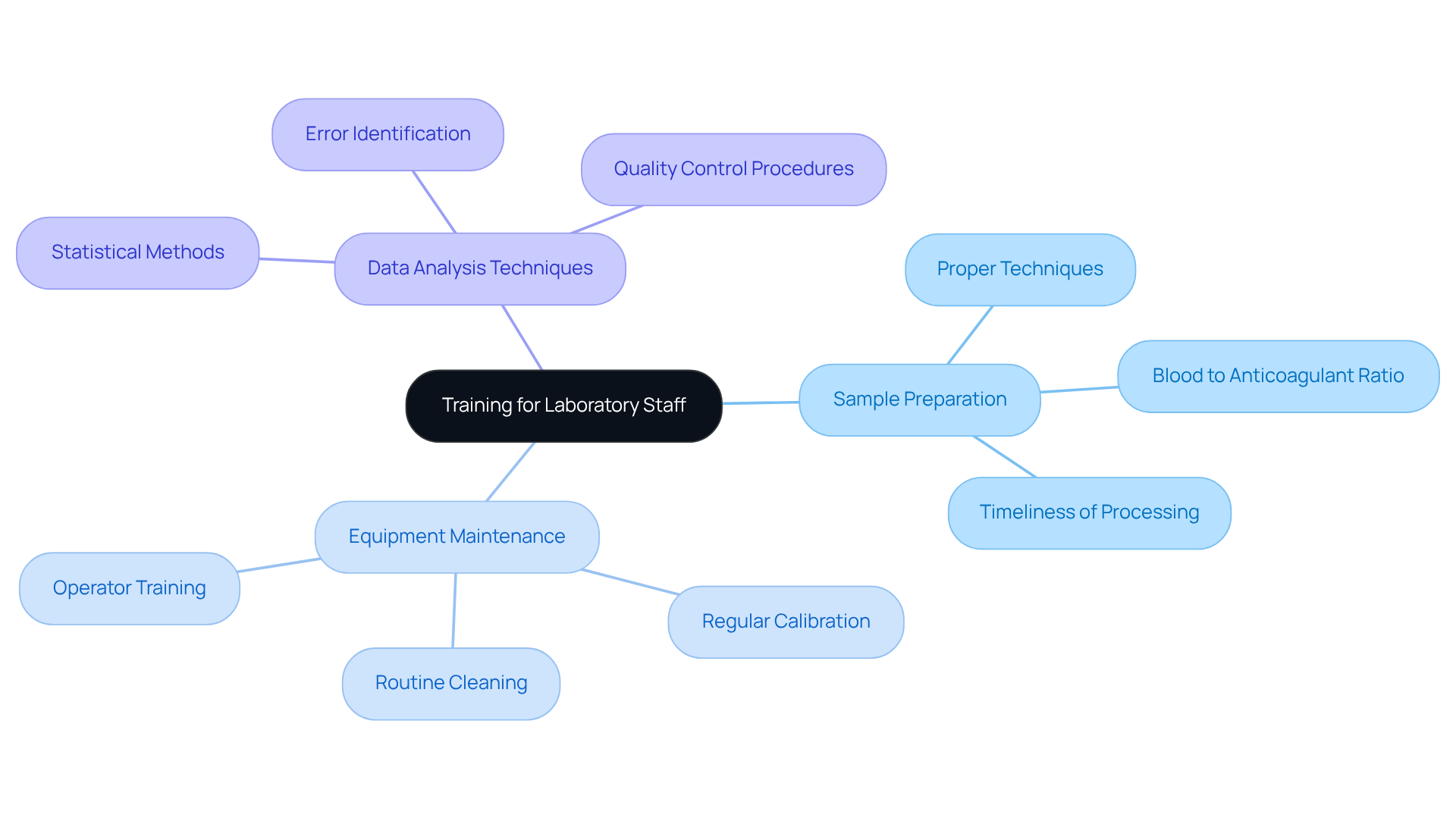
Collaborate with Experts to Improve Chromatography Techniques
Collaborating with specialists in separation science significantly enhances laboratory techniques and methodologies. By engaging with these experts, laboratories gain valuable insights into advanced separation techniques, effective troubleshooting strategies, and innovative solutions to common challenges.
Forming partnerships with educational institutions or industry leaders fosters knowledge sharing, propelling advancements in chromatography methods. This collaboration ultimately leads to improved research findings and greater operational efficiency.
Notably, a review identified 44 measures of research collaboration quality, emphasizing the critical role of effective partnerships in achieving superior outcomes. Experts highlight that collaboration not only bolsters technical capabilities but also aligns with the increasing emphasis on sustainability in laboratory practices. This alignment ensures that laboratories are well-prepared to meet the evolving demands of the field.
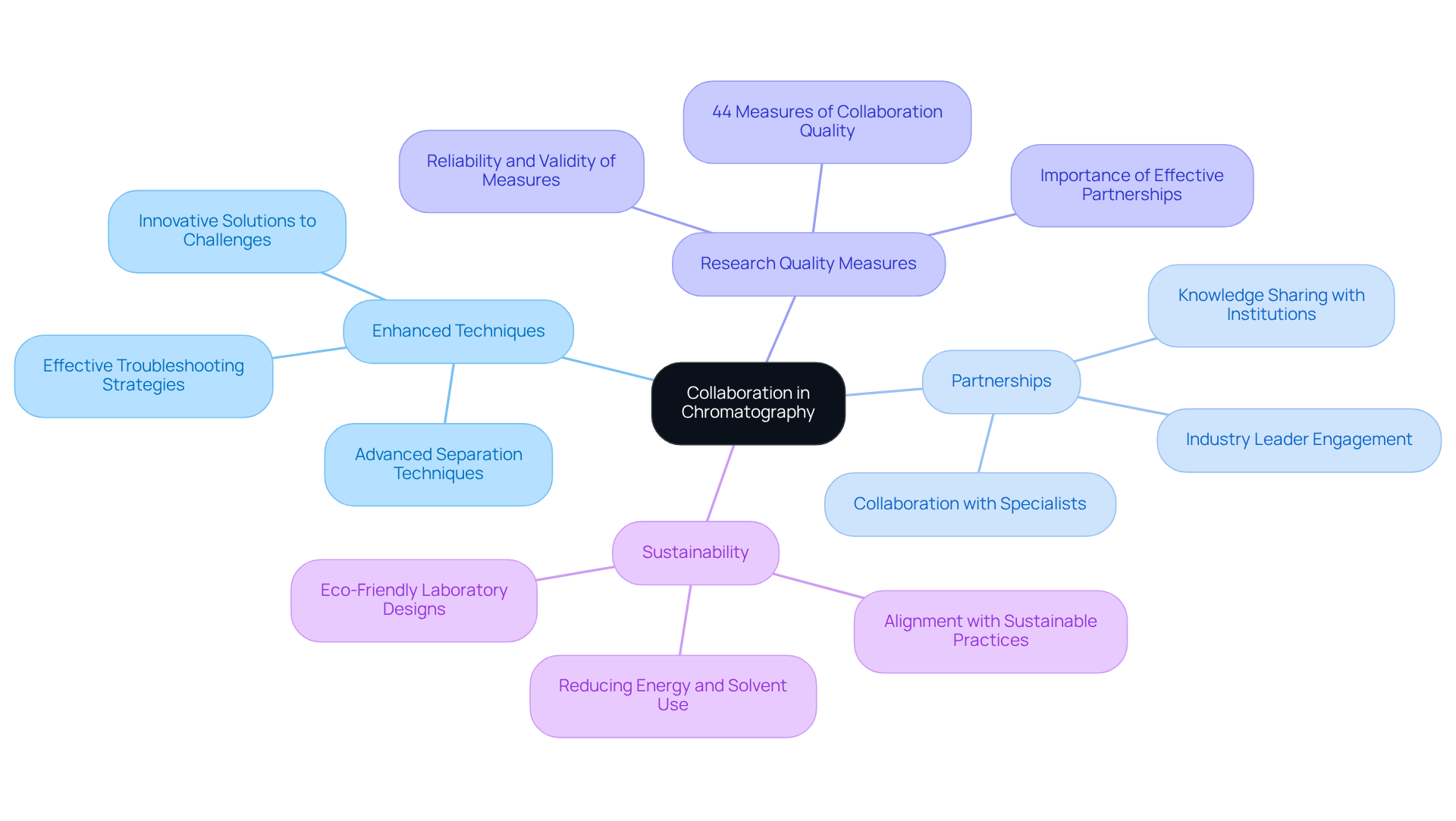
Conclusion
The journey to mastering column flash chromatography is paved with strategic approaches and best practices that enhance separation efficiency and analytical outcomes. By integrating essential tips—from selecting the right stationary phase to optimizing flow rates and maintaining equipment—laboratories can significantly improve their chromatographic processes. Each aspect discussed not only contributes to achieving higher resolution and purity but also positions laboratories to meet the growing demands of the industry.
Key insights from this guide emphasize the importance of meticulous sample preparation, effective monitoring of elution, and the judicious selection of solvents. These elements, coupled with the use of advanced software tools and ongoing staff training, create a robust foundation for successful chromatography operations. Collaborating with experts further enriches laboratory practices, ensuring that teams stay at the forefront of innovations and methodologies in the field.
Ultimately, embracing these essential strategies fosters a culture of continuous improvement in chromatography. By prioritizing best practices and leveraging the latest advancements, laboratories can enhance their analytical capabilities, leading to more reliable results and greater contributions to scientific research. The commitment to excellence in column flash chromatography not only drives individual laboratory success but also propels the entire field forward, paving the way for future discoveries and innovations.




